

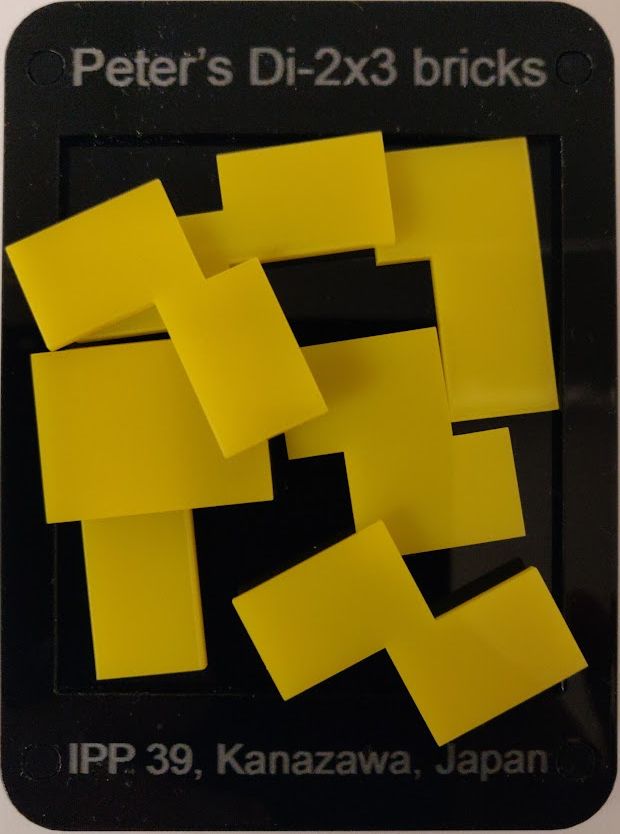
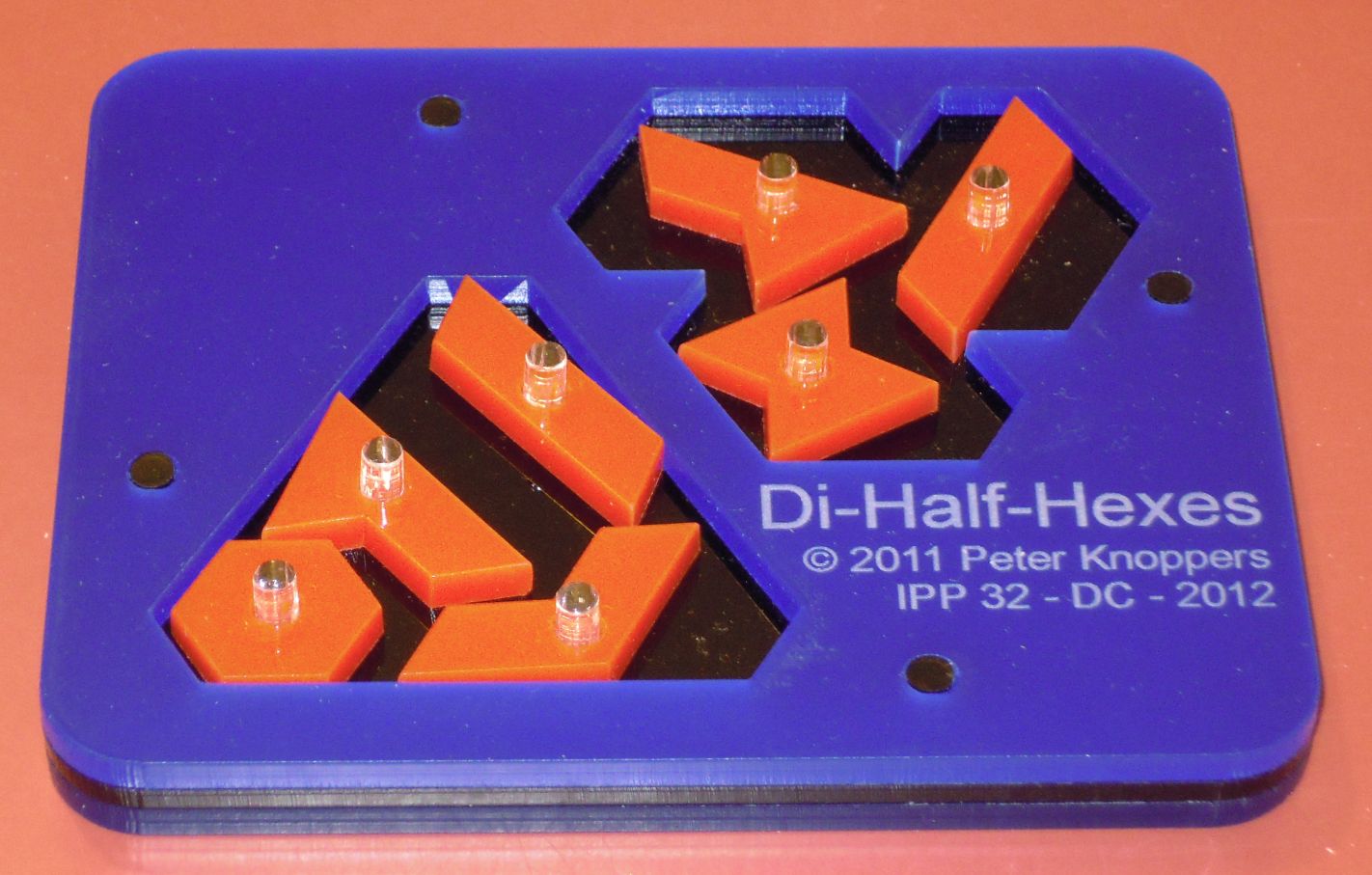

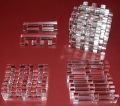
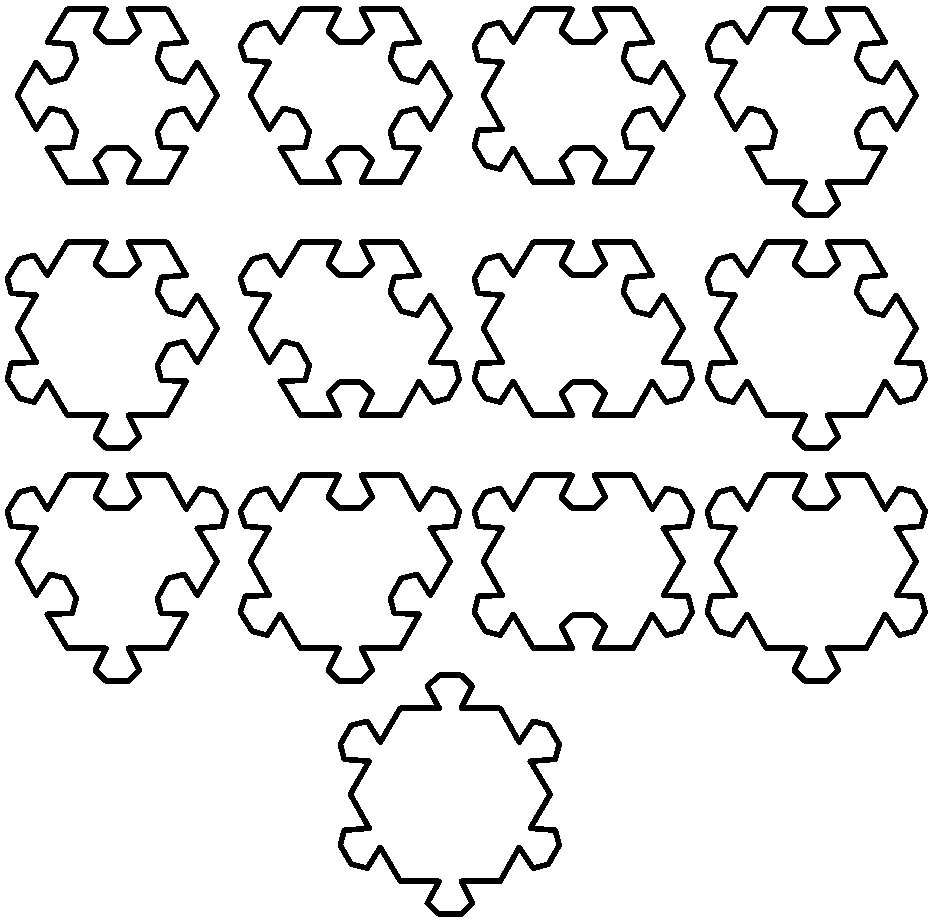
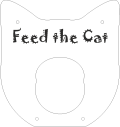
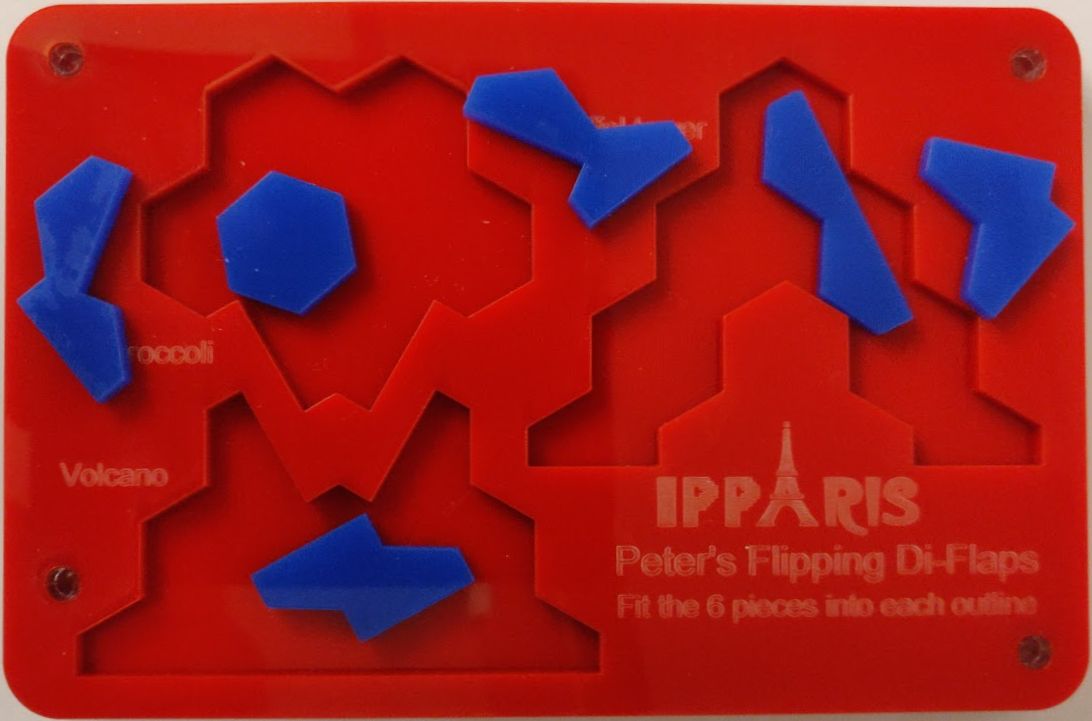



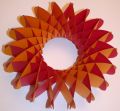
One left
Buttonius Puzzles & Plastics is a hobby of Peter Knoppers.
When you liberally translate the last name 'Knoppers' from Dutch
to English and Latin-ize that, you could end up with 'Buttonius',
hence the name.
Buttonius Puzzles & Plastics has a laser cutting and engraving machine that can cut certain plastics (non PVC), thin woods, thick paper, rubber, etc. All materials that can be cut can also be engraved. Additionally, there are some materials that can be engraved, but not cut. Some examples are: glass (some kinds) and most coated metals.
The laser cutting and engraving machine can engrave the (horizontal) top surface of objects that are no larger than 30cm by 60cm (12" by 24"). The maximum height of objects to be engraved is about 15cm (6"). Planar objects (of compatible materials) can be cut with the machine. It is possible to combine engraving and cutting in one job.
The laser cutting machine is controlled at a maximum resolution of 1200DPI, this means that one step is about 0.02mm. The positioning accuracy is probably less, but not much. At the focal point, the (far infrared) laser beam has a thickness of about 0.1mm. Therefore the positioning resolution is about five times better than the thickness of the cut. The thickness of the laser beam increases above and below the focal point. This is not very noticeable when cutting material that is less then 10mm thick, but it will cause loss of precision when cutting thicker material.
A very common material to laser engrave and cut is acrylic, also known under the brand names Plexiglas and Perspex, or the chemical name polymethyl-methacrylate (often abbreviated to PMMA). Acrylic is available in many colors and thicknesses, but very few combinations of these are commonly available. Transparant acrylic is readily available in many thicknesses, colored acrylic is readily available in 3mm thickness. Other combinations can only be ordered in very large quantities.
The actual thickness of acrylic can vary per batch, and even
within a single sheet. In a nominally 8mm sheet I've observed
the thickness vary between 7.2mm and 7.8mm. Designers of puzzles
that are to be cut from acrylic should not rely on very accurate
or constant thickness of the material.
If this cannot be avoided, extruded acrylic may be used, but
this has much higher internal stresses than the (more expensive)
cast acrylic. Extruded acrylic usually has more local differences
in thickness, but the extremes (difference between thickest and
thinnest parts) should be more limited.
Around the cut, the acrylic welds up and down a bit to the surface. This makes a cut out piece of acrylic slightly thicker around the cutting edges (about 0.1mm). An advantage of this effect is that a cut out piece on a flat surface is actually supported only on the edges and therefore much less likely to get scratched.
Normally, acrylic is cut on a vector grid (to prevent damage to the table on which the object is supported in the machine and to improve cooling and ventilation). When the cutting laser beam crosses one of these grid plates, a slight imperfection is introduced where the laser light is reflected back into the acrylic. I have developed a technique that avoids this. I support the acrylic that must be cut with small bits of acrylic at points where the laser will not pass in cutting mode. Laser cut acrylic does not normally require any further polishing to look and feel very smooth. If needed, slight torching (with a small buthane flame) can make the edges slightly more rounded.
Acrylic can also be engraved with the laser. Gray scale images and texts can be printed with a limited number of gray levels. Transparant acrylic is normally engraved from the back (which means that the image will have to be mirrored). Colored acrylic is more commonly engraved from the front, because it it not sufficiently transparant to observe the image through the material.
Text can be engraved using any MS-Windows font in any font size and direction.
Virtually all fine-grained woods can be engraved with a laser. The grain of the wood will normally be visible through the engraved image. When the grain is finer, this effect becomes less disturbing.
Thin wood can be cut with the laser. Some charring will occur. This increases with the thickness of the wood, but it also depends on the kind of wood. Wooden sheets for laser-cutting or -engraving must be flat.
If you want me to laser-cut your CAD file read these instructions first. If you have suggestions to improve these instructions, please email me.
I've made a copy of the Computers Choice Unique 10 Burr puzzle from tin. I have some photos and a description of the process.
| Name | Type | Exchange? | Designer(s) | Material | Price | |
|---|---|---|---|---|---|---|
 | 10x1 in a Cube | 3-Dimensional assembly | G4G10 | Peter Knoppers | 5mm sandblasted Blue Acrylic | € 1 |
| Big Knot | Burr | Oskar van Deventer | Clear 8mm Acrylic | € 25 | ||
| Big Knot Variation | Burr | Oskar van Deventer | Clear 8mm Acrylic | € 30 | ||
 | Crazy Elephant Dance kit (assembly required) | Disentanglement | Markus Götz († 2018-01-07) | 4mm MDF | No longer available | |
 | Peter's Di-2x3 Bricks, a.k.a. Di-Short-Bricks, (the back of the tray has another outline) | 2-Dimensional assembly | IPP 39 | Peter Knoppers | Yellow and Black 3mm Acrylic | € 15 |
 | Di-Half-Hexes, (the back of the tray has two more outlines) | 2-Dimensional assembly | IPP32 | Peter Knoppers | Black and two other colors (various combinations available) Acrylic | € 20 |
 | EGGcentric | Sequential movement | IPP26 | Oskar van Deventer & Peter Knoppers | Black and Yellow Acrylic | No longer available |
 | Eighteen Eights | Burr | IPP31 | Peter Knoppers | Clear 8mm Acrylic | € 35 |
 | The Elusive 13 Piece Complete Set Puzzle | Burr | G4G13 | Peter Knoppers | One of various colors 3mm Acrylic | € 3 |
 | Feed the cat | Disentanglement | IPP28 | Oskar van Deventer & Peter Knoppers | Clear and Black Acrylic | No longer available |
 | Peter's Flipping Di-Flaps, (the back of the tray has three more outlines) | 2-Dimensional assembly | IPP 37 | Peter Knoppers | Red 3mm Acrylic with Blue pieces, or Blue 3mm Acrylic with Red pieces | € 20 |
 | Knot Mass | Burr | Oskar van Deventer | Clear 8mm Acrylic | € 99 | |
| Martin Gardner Modular Origami G4G12 Rhombic Dodecahedron (folding and assembly required) | Modular origami | G4G12 | Peter Knoppers & Scott Kim | White 80g/m2 paper | € 2 | |
 | Origami Cube (assembly required) | 3-Dimensional assembly | G4G7 | Oskar van Deventer | 200g/m2 Red paper | € 2 |
 | Polysquaretangles | 2-Dimensional assembly | IPP29 | Peter Knoppers | 4mm MDF | € 15 |
| Quadraplank puzzle with orthogonal planks | Burr | IPP23 | Peter Knoppers | Various types of wood | € 80 | |
| Quadraplank puzzle with parallel planks | Burr | Peter Knoppers | Various types of wood | € 80 | ||
 | Torus Sliceform | 3-Dimensional assembly | Peter Knoppers | 200g/m2 Red and Yellow paper | € 15 One left |
I have a blog (in Dutch) about traffic, money, healthcare, governance and communication systems (but I reserve to right to expand the subjects to anything I like).
You can send email to info@buttonius.com, or write to
Peter Knoppers Buttonius Puzzles & Plastics Conradlaan 20 2627 BT Delft The Netherlands